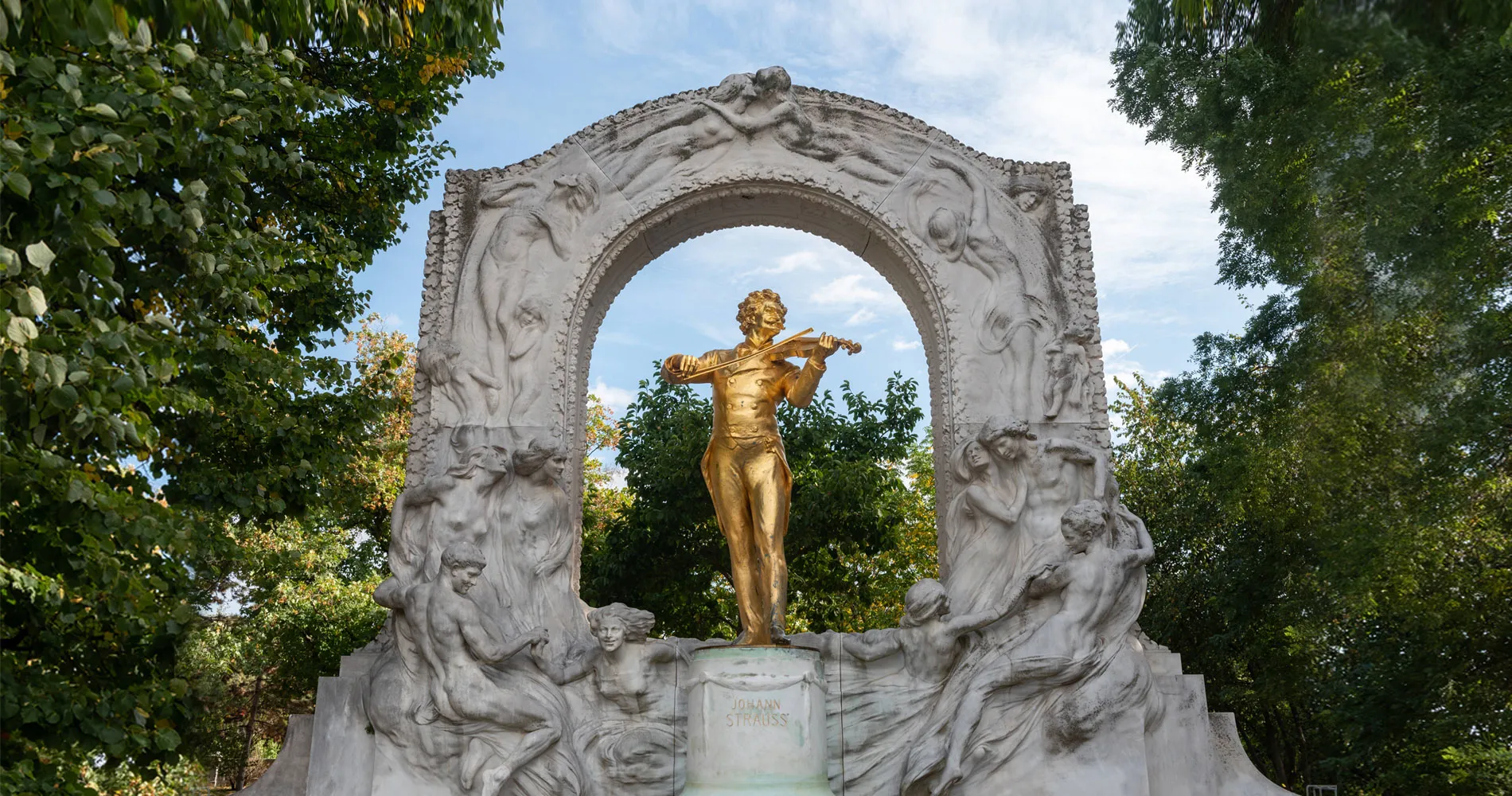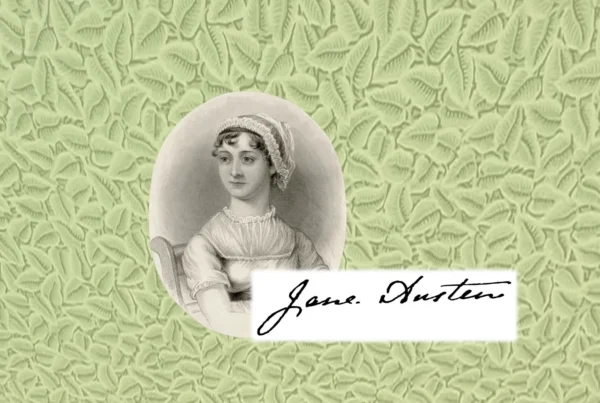Vienna is celebrating the 200th anniversary of one of its most famous sons – Johann Strauss II. Johann Strauss became the most celebrated composer of his time. He was known as the Waltz King during his lifetime. Strauss was the musical superstar of his time and a main reason why Vienna is today known as the city of music. The waltz which was considered scandalous and risqué has become one of the most popular dances in the world.
David Deegan
10 February 2025
Arabic version | French version
The year 2025 marks the 200th anniversary of the birth of the Austrian composer Johann Strauss II, a name synonymous with the Viennese waltz. Known affectionately as the “Waltz King,” Strauss left an indelible mark on the world of classical music, transforming the waltz from a simple folk dance into a sophisticated art form and elevating Austria’s cultural identity on the global stage.
Born on 25 October 1825, in Vienna, Johann Strauss II was the eldest son of Johann Strauss I, a celebrated composer and conductor in his own right. Despite his father’s disapproval of a musical career for his children, which stemmed from his belief that the hardships and instability of a musician’s life were unsuitable for them, Strauss pursued his passion, secretly studying violin and composition, and conducting his own dance band in a Viennese restaurant. Following his father’s death in 1849, Strauss took over the family orchestra and quickly eclipsed his father’s fame, becoming one of the most celebrated composers of his time.
His ascent was not without challenges. As well as establishing his own identity separate from his father, there was rivalry with his two brothers, Josef and Eduard, who were also accomplished musicians. According to the Johann Strauss Museum in Austria, Strauss himself said about Josef, “He is the more talented one, I am the more popular.” The international tours of his orchestra were logistically and financially demanding, and in 1870 he eventually handed over its leadership to his two brothers so that he could continue to focus on writing music. Despite these obstacles, Strauss’s perseverance and innovative approach to music brought him success at home and abroad.
While the waltz had existed for decades, it was Strauss who refined the dance into a polished and elegant genre, suitable for concert halls and high society. His compositions combined lyrical melodies, lush harmonies, and dynamic orchestration, setting a new standard for dance music. Among his works, which number over 500, waltzes such as The Blue Danube (written in 1867), Tales from the Vienna Woods (1868), and The Emperor Waltz (1888) remain perennial favorites.
The Blue Danube stands as a symbol of Vienna’s musical heritage. Originally composed as a choral waltz, it gained immense popularity after its orchestral debut at the 1867 Paris Exposition. Today it is often performed at New Year’s Day concerts and, along with other waltzes by Strauss, has helped cement Vienna’s status as the “City of Music” and contributed significantly to the city’s economy, as concerts and festivals centered around his works became major tourist attractions. It also features in a memorable sequence in Kubrik’s 1968 film “2001 – A Space Odyssey”, acting as the backdrop to a gigantic space station whirling through the stars.
While Strauss is best known for his waltzes, his operettas also earned him acclaim. Works such as Die Fledermaus (The Bat – 1874) and Der Zigeunerbaron (The Gypsy Baron – 1885) combined sparkling melodies with comedic storytelling. These operettas bridged the gap between classical opera and popular entertainment, influencing composers like Franz Lehár (composer of The Merry Widow in 1905). Strauss’s operettas expanded Vienna’s cultural cachet beyond the concert hall, contributing to the city’s reputation as the global capital of light opera.
Strauss’s music, often performed at high-profile events and international expositions, brought Viennese culture to a global audience. Strauss’s orchestra performed at the 1867 Paris Exposition, where The Blue Danube gained international acclaim. His works were also featured at the 1873 Vienna World Exposition, which showcased Austria’s cultural and industrial achievements. Additionally, Strauss conducted performances in London during the International Exhibition of 1862, annually in Russia between 1856 and 1865, and during the United States Centennial Exposition in Philadelphia in 1876 where his orchestra played daily in the main building. Furthermore, his works celebrated the grandeur of the Habsburg Empire, as seen in pieces like Kaiser-Walzer (The Emperor Waltz), which was composed in 1888 to honor Emperor Franz Joseph’s meeting with the German Emperor Wilhelm II.
Since 1939, the New Year’s Concert performed by the Vienna Philharmonic in the Golden Hall of the Musikverein, a renowned concert hall in central Vienna, has always featured Strauss’s music, underscoring his enduring connection to Austrian identity. This annual tradition has been televised and broadcast globally on New Year’s Day, showcasing Austria’s musical heritage to millions of viewers around the world.
Strauss’s music gained immense popularity in Europe and beyond. His tours across Russia, England and the United States introduced audiences to the Viennese waltz, fostering a global appreciation for Austrian musical traditions. A possibly apocryphal anecdote describes how Brahms wrote a playful dedication on a fan for Strauss’s wife, saying, “Unfortunately, not everyone can be a Johann Strauss”.
In 2025, the bicentennial of Strauss’s birth, concert halls around the world will undoubtedly honor his contributions with performances of his beloved waltzes and operettas. In Vienna, the Johann Strauss Museum and the annual Strauss Festival will play central roles in commemorating this anniversary. The official “Johann Strauss 2025” website announced that events celebrating Strauss will take place throughout the year in no less than 69 sites in Vienna. Specific events include a gala concert at the Vienna City Hall on 25 October 2025 featuring the Vienna Philharmonic performing Strauss’s masterpieces. Additionally, the Musikverein will host a series of waltz concerts performed in the orchestration that was popular at the time. Furthermore, on 5 July 2025 an open-air concert is planned in the City Hall Park, featuring 800 musicians from 15 orchestras performing Strauss’s works.
Despite marrying three times, he died childless on 3 June 1899, leaving instead an enduring musical legacy. The bicentennial is an opportunity to reflect on the broader cultural and historical significance of Strauss’s music. His works not only capture the elegance and optimism of a bygone era but also serve as a reminder of music’s power to bring people together across time and space.







